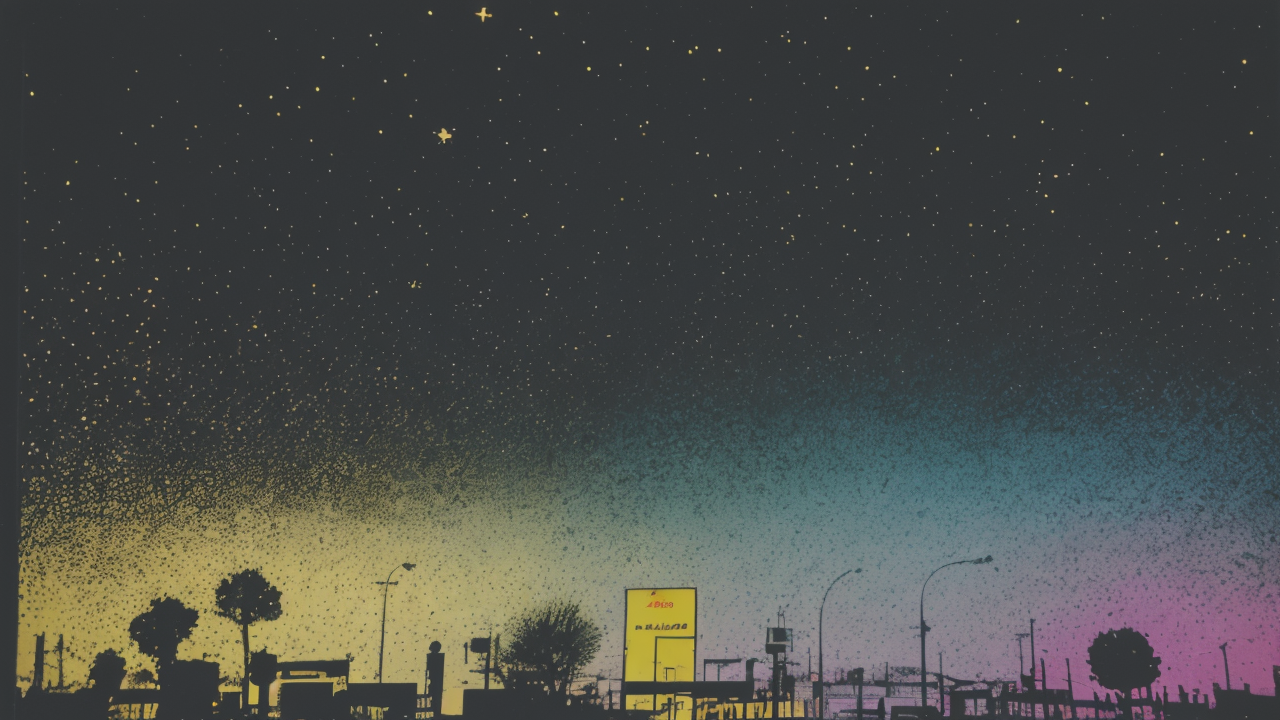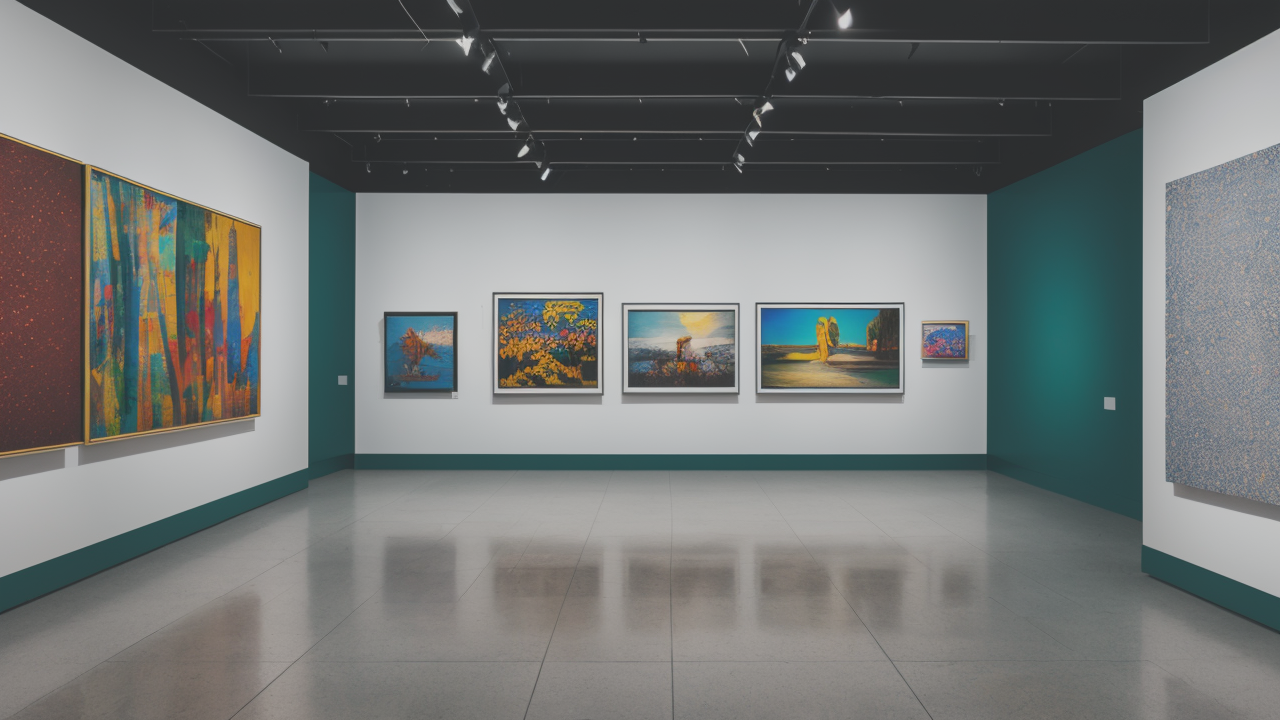
Vibrant Visions: The Intersection of Colorful Abstract Painting and Pop Art
The Evolution of Pop Art in the United States: A Historical Perspective
The Birth of Pop Art: The Influence of Comic Culture
Pop art emerged in the 1950s, drawing inspiration from comic books and advertisements. Artists like Roy Lichtenstein and Andy Warhol led this movement. They transformed everyday images into fine art.

Comic books greatly influenced pop art's style. Bold colors and simple lines became key features. Artists used these elements to create eye-catching works. They took ordinary objects and made them extraordinary.
Pop art was a response to abstract expressionism. It brought art back to familiar subjects in a new way. The movement celebrated mass culture and consumerism. It blurred the lines between high art and popular culture.
From Comic Strips to Fine Art: The Journey of Pop Art
Pop art quickly moved from comics to galleries. Artists took familiar images and gave them new meanings. They used commercial printing techniques to make art look mass-produced.
Key figures like Jasper Johns and Robert Rauschenberg paved the way. They incorporated everyday objects into their art. This approach influenced later pop artists. The movement grew to include sculptures and installations.
As pop art evolved, it became more diverse. Artists explored new themes and techniques. They commented on society and politics. Pop art became a mirror of American culture, reflecting its dreams and flaws.
The Significance of Abstract Elements in Pop Art
Abstract elements play a crucial role in pop art. They add depth and complexity to familiar images. Artists use color, shape, and form in unexpected ways. This creates tension between recognition and abstraction.
Many pop artists incorporate abstract techniques. They might distort images or use non-representational elements. This adds layers of meaning to their work. It challenges viewers to look beyond the surface.
Abstract elements in pop art can convey emotions or ideas. They can make a familiar image feel new or strange. This blend of abstraction and representation is a hallmark of pop art. It keeps the genre fresh and engaging.
Current Innovations in Abstract Pop Art
Integrating Technology and Interactivity in Pop Art Creations
Today's pop artists embrace technology. They use digital tools to create and display their work. Some artists incorporate interactive elements. This allows viewers to engage with the art in new ways.

Virtual and augmented reality are changing pop art. Artists can create immersive experiences. These blur the line between art and viewer. Digital projections and light installations are also popular. They bring pop art to life in exciting ways.
3D printing is another tool in the pop artist's kit. It allows for complex shapes and textures. Artists can create sculptures that were once impossible. Technology is pushing pop art into new territories.
The Role of Social Media in Promoting Pop Art
Social media has revolutionized how pop art reaches audiences. Artists can share their work instantly with millions. Platforms like Instagram and TikTok are perfect for visual art. They allow artists to build followings and sell work directly.
Many pop artists use social media as part of their art. They create works designed to be shared online. This has led to new forms of pop art. Memes and GIFs can be seen as modern pop art forms.
Social media also influences pop art themes. Artists comment on online culture in their work. They explore ideas of identity and connection in the digital age. Social media has become both a tool and a subject for pop artists.
How Artists are Blending Traditional and Digital Techniques
Modern pop artists often mix old and new methods. They might start with a hand-drawn sketch. Then they'll finish it digitally. Or they might use digital design tools to plan traditional paintings.
Some artists are reviving old techniques with a digital twist. Screen printing, a pop art staple, is being updated. Artists use digital files to create complex, layered prints. This blends the charm of handmade art with digital precision.
Collage is another technique getting a digital update. Artists mix found images with digital elements. This creates rich, complex works. The blend of techniques reflects our mixed analog and digital world.
The Future of Pop Art in the American Context
Predicting Trends: What's Next for Pop Artists?
The future of pop art looks bright and diverse. Artists will likely continue to explore digital realms. We may see more AR and VR art experiences. These could bring pop art into public spaces in new ways.

Environmental themes may become more prominent. Pop artists could use their bold style to highlight climate issues. We might see more sustainable materials used in pop art creations.
Identity and representation will remain important themes. Pop art will likely become even more diverse. Artists from various backgrounds will bring new perspectives to the genre. This will keep pop art relevant and exciting.
The Impact of Pop Culture on Art Galleries and Exhibitions
Pop art is changing how galleries operate. Many are embracing interactive and digital displays. This makes art more accessible to younger audiences. Some galleries are even hosting virtual exhibitions.
Pop culture themes are becoming more common in major museums. This reflects pop art's influence on the art world. Exhibitions now often include elements of popular culture. This helps attract wider audiences to art spaces.
Galleries are also changing how they sell art. Many now use social media to reach collectors. Some offer virtual viewing rooms. This allows people to experience art from anywhere in the world.
Educating the Next Generation: Pop Art in the Academic Realm
Pop art is gaining ground in art education. Many schools now teach its history and techniques. Students learn to analyze pop culture critically through art. This helps them understand media and consumerism.
Art programs are incorporating digital skills alongside traditional ones. This prepares students for the current art world. They learn to use both paintbrushes and digital tablets. This broad skill set is crucial for aspiring pop artists.
Some schools are partnering with working artists. This gives students real-world experience. They learn about the business side of art too. This holistic approach helps create well-rounded artists for the future.


